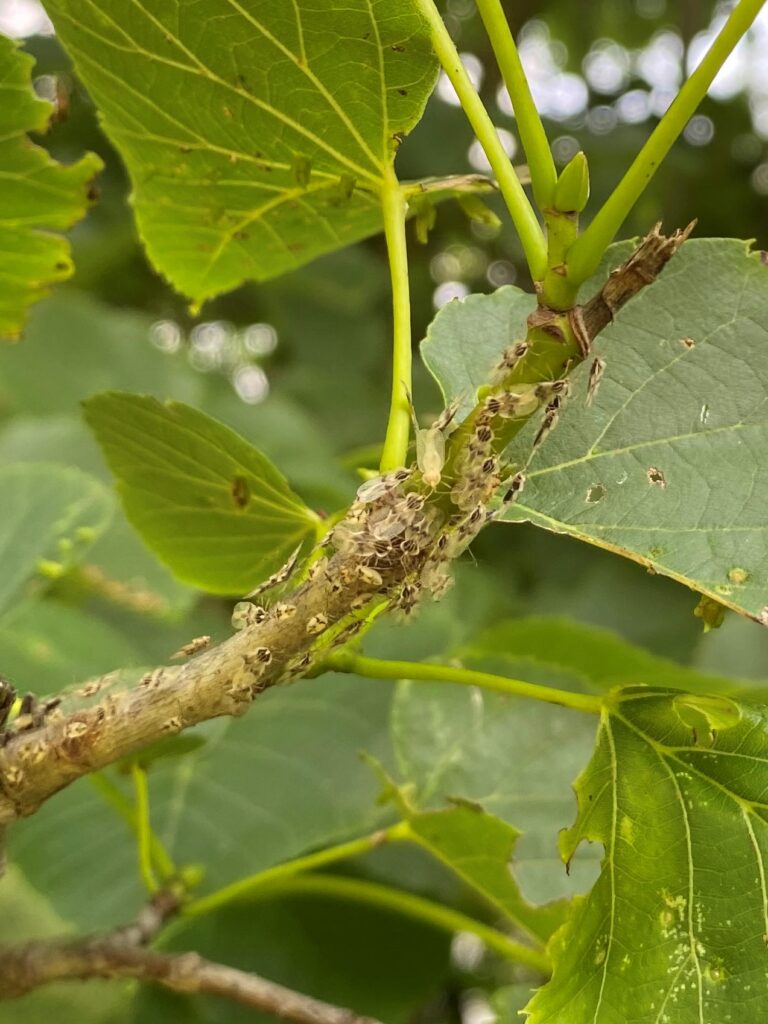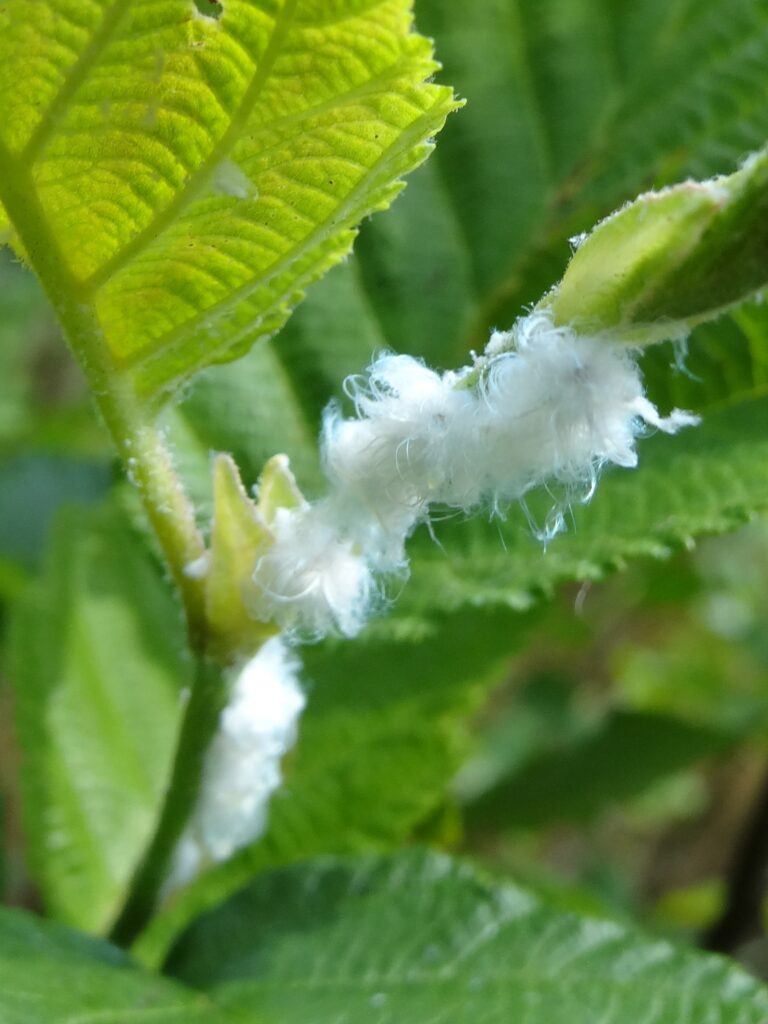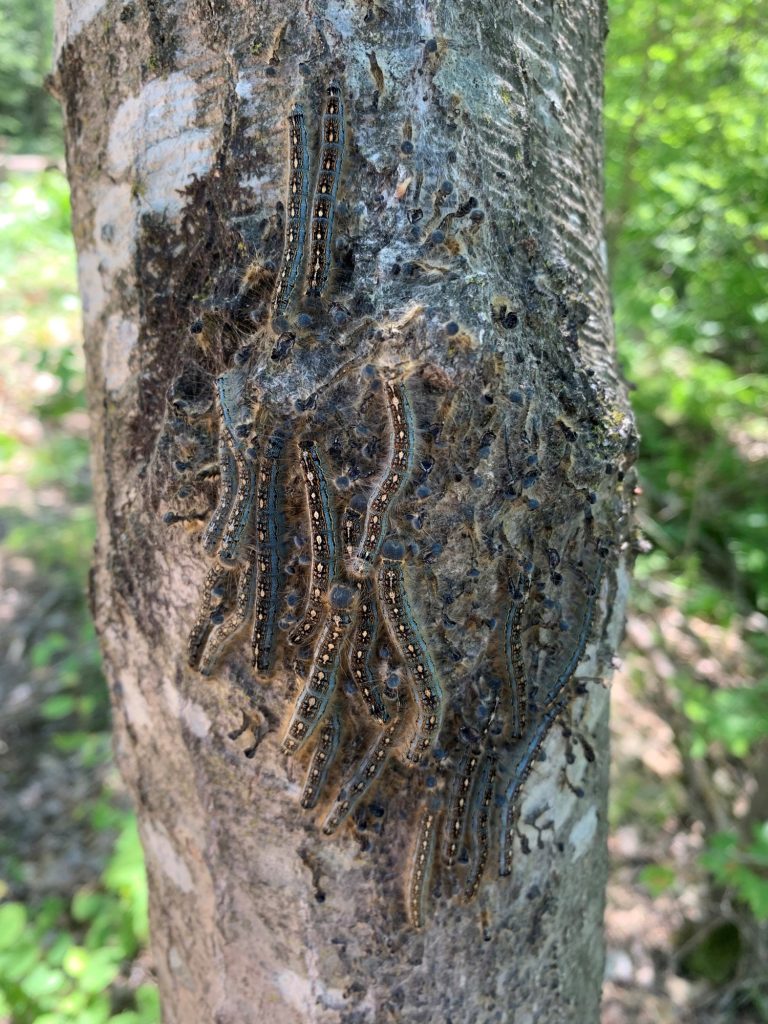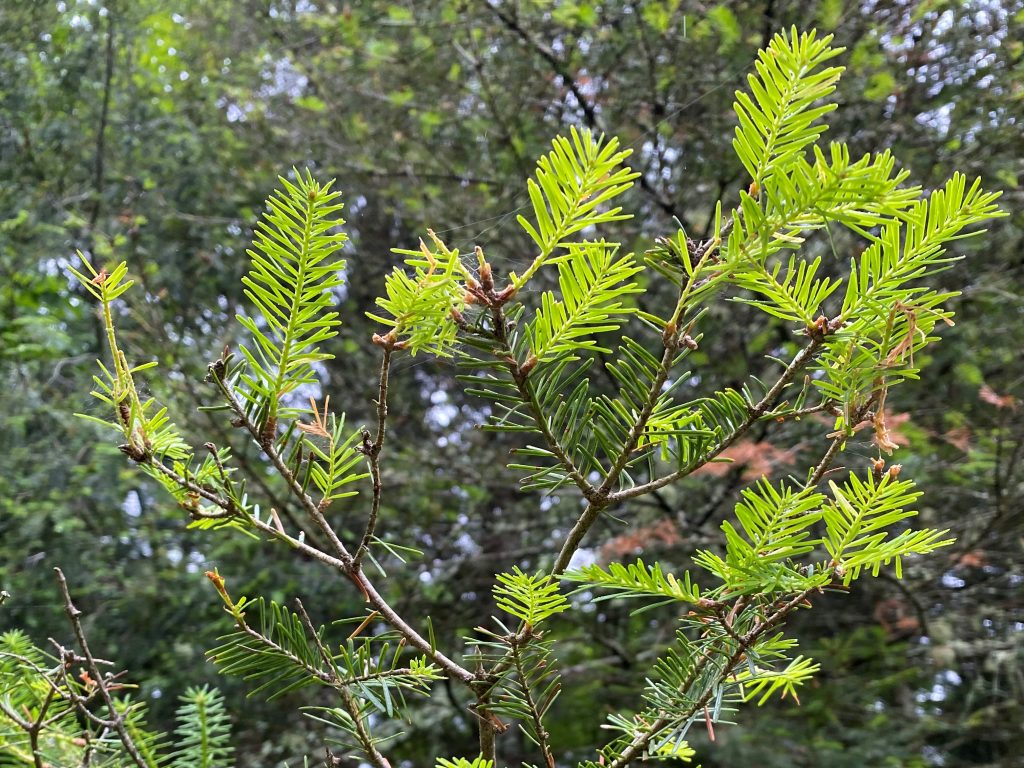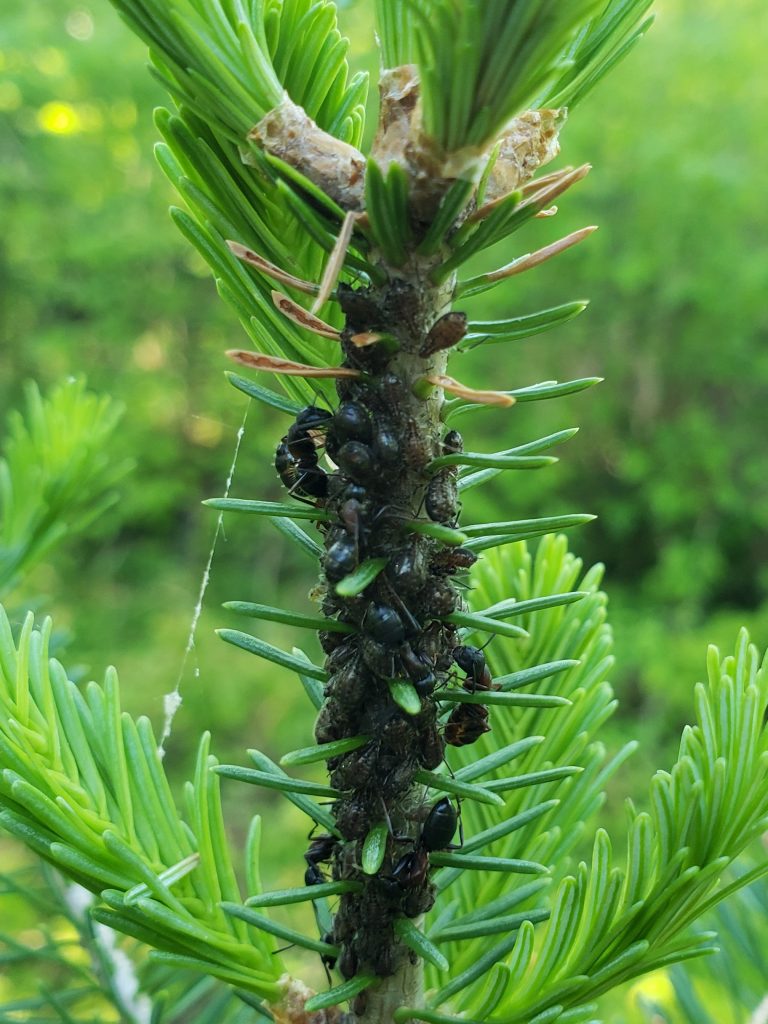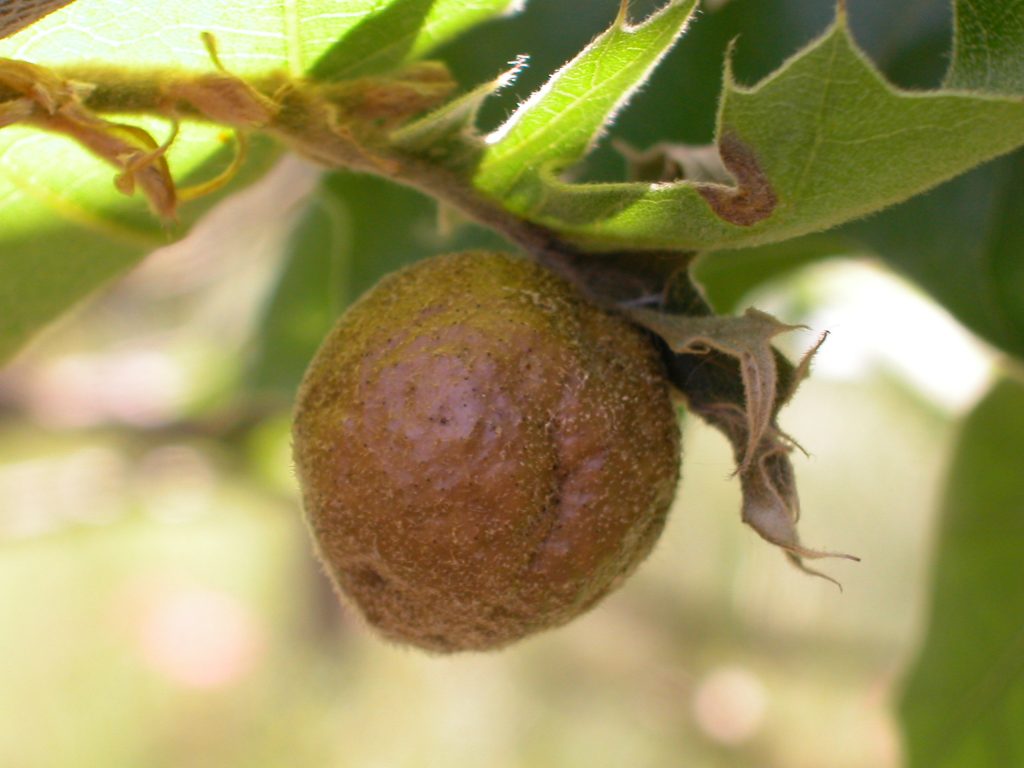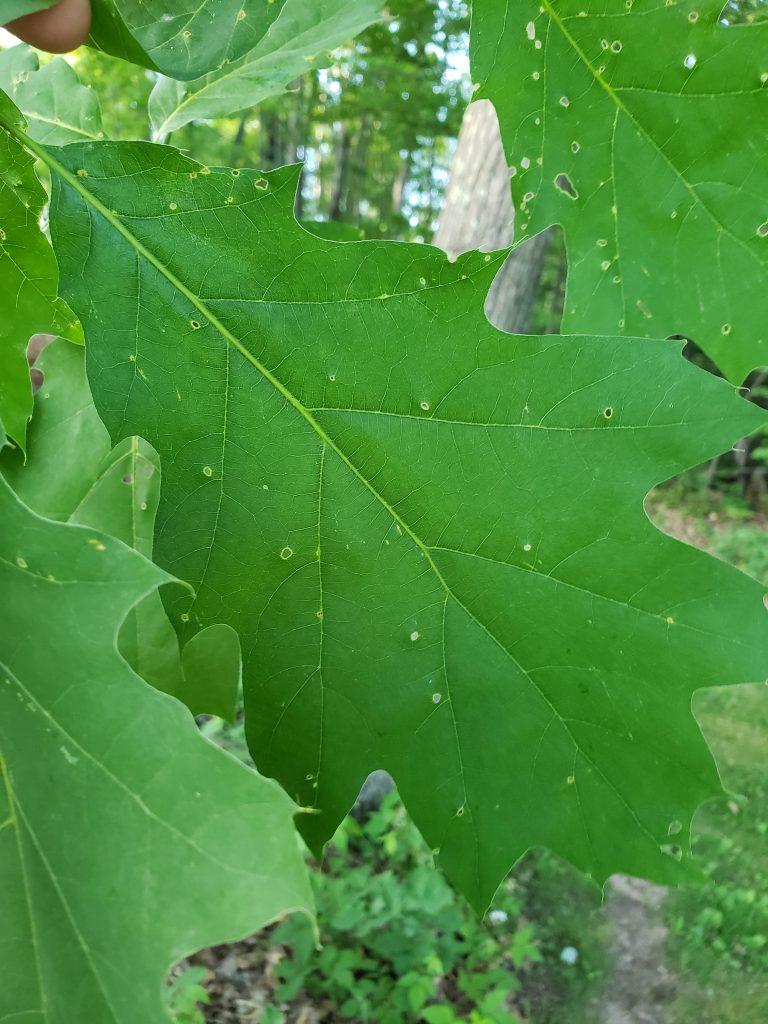By Linda Williams, DNR Forest Health Specialist, Woodruff, Linda.Williams@wisconsin.gov or 920-360-0665
Oak timberworm, Arrhenodes minutus, is a primitive weevil that can cause defects and degrade in red and white oak timber. They can also infest elm, poplar and beech. Egg-laying females will seek out trees that are damaged, wounded, nearly dead or recently dead. After the eggs hatch, the larvae bore across the grain through the tree then “U-turn” back across the grain to the point of origin, taking two or three years to complete their life cycle and creating a lumber defect called a wormhole. When infested wood is split for firewood, the weevils may emerge in homes or garages if they had already pupated when the firewood was split.
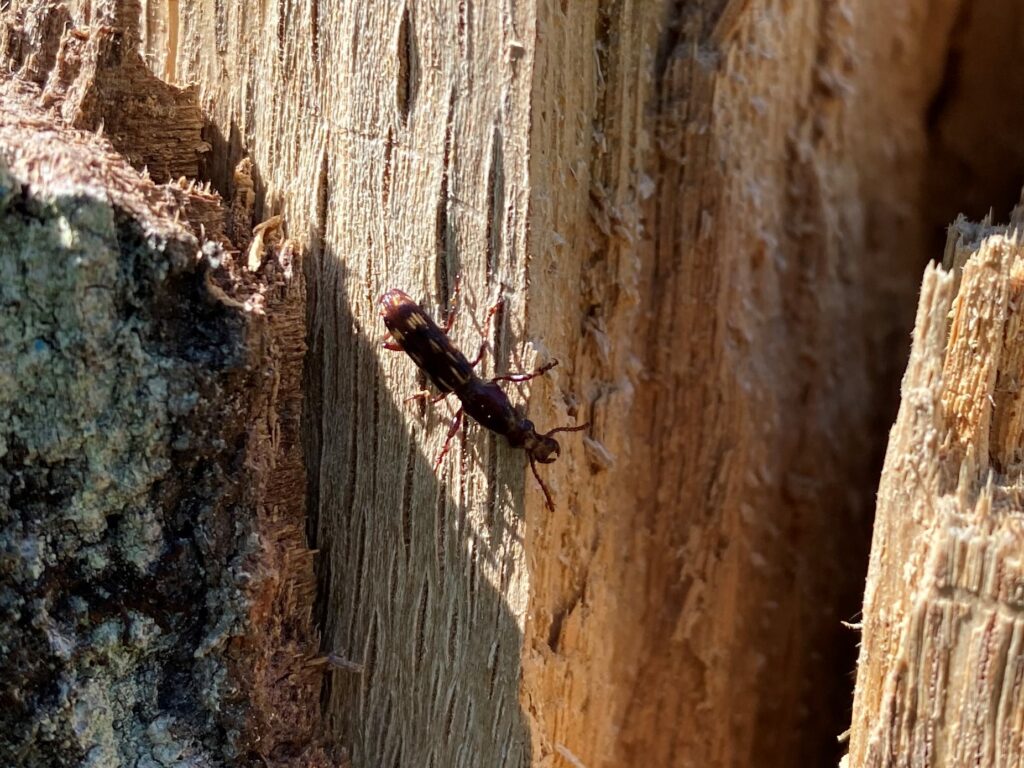
Male oak timberworm on a Northern red oak that was damaged in a storm.

